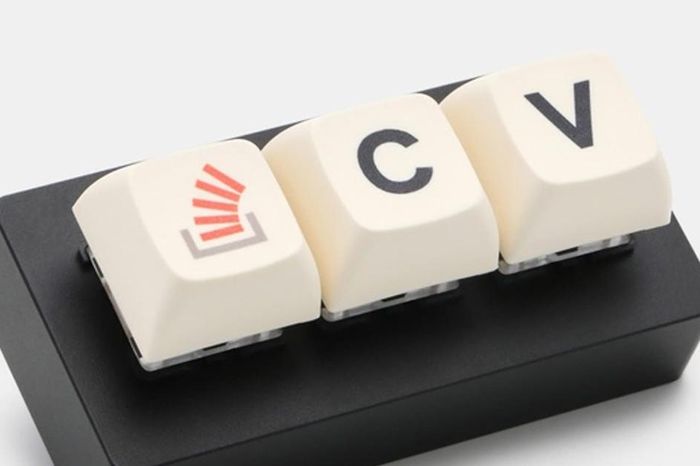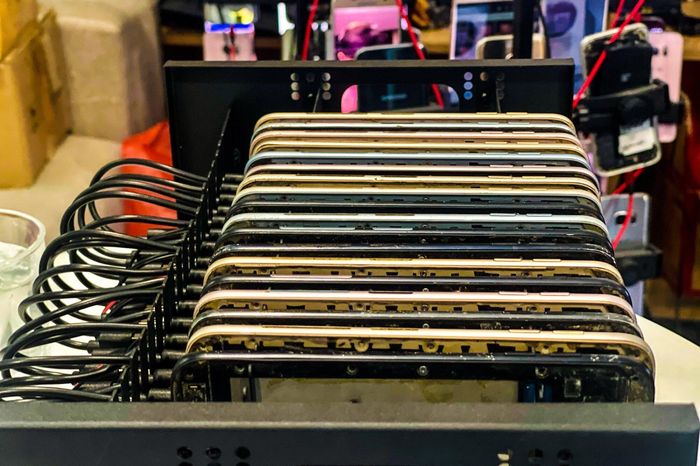Japan creates a robot with living muscles that can walk in water
Previously, a number of bio-hybrid robots with the ability to crawl and swim were built with muscles developed in the laboratory. However, the new robot is the first bipedal robot that can turn and make sharp turns. It does this by sending electricity into one leg to cause the muscle to contract, while the other leg remains stationary. The muscle acts as a biological actuator - a device that converts electrical energy into mechanical force.
The robot is only 3 cm tall, cannot currently stand on its own in the air and has a foam float that helps it stand in a water tank. Its muscles are grown from mouse cells in the laboratory.

Illustration.
"This is just basic research. We have not yet reached the stage where we can use this robot anywhere. For it to work in the air, we need to solve many related problems, but we I believe it can be done by increasing muscle strength," said research team member, expert Shoji Takeuchi at the University of Tokyo.
The robot is still very slow by human standards, moving only 5.4 mm per minute. It also took more than a minute to turn 90 degrees, given that it received electrical stimulation every 5 seconds. To walk in the air instead of in water, the robot also needs a nutrient supply system to help maintain the life of muscle tissue.
Takeuchi hopes the team can make the robot move faster by optimizing the electrical stimulation pattern and improving the design. "The next step with this bio-hybrid robot is to develop a version with joints and additional muscle tissue to be able to walk in a more sophisticated way. It will also be necessary to develop thick muscles to increase strength." strong," he said.
"Biohybrid robots are useful tools for studying engineered muscle tissue, and also help research how to control biological actuators. As force and control are enhanced through this type of research , the possibility of applying such actuators to more complex robots will increase," commented expert Victoria Webster-Wood at Carnegie Mellon University.
You should read it
- Robots are also 'fired' before the technology industry's cost-cutting efforts
- Admire Anymal robots that can use elevators like people
- Can people and robots give birth together in 100 years?
- Scientists create cockroach robots that run super fast, step back and die, and weigh a million times more
- Robots are identical to humans that are almost indistinguishable, causing confusion and fear
- Robots are equipped with two arms to help harvest cucumbers
- Scientists develop small magnetic robots to treat hard-to-reach body parts
- New firefighting robots are put into testing
May be interested
- Exercises to help you walk faster, farther and longer
 walking is a low-impact but great physical activity. this workout plan will improve your mobility, flexibility, and strength to help you walk faster and more efficiently.
walking is a low-impact but great physical activity. this workout plan will improve your mobility, flexibility, and strength to help you walk faster and more efficiently. - New firefighting robots are put into testing
 researchers at italy's iit-istituto italiano di tecnologia have succeeded in testing a new version and improving the walk-man humanoid robot, designed to assist firefighters.
researchers at italy's iit-istituto italiano di tecnologia have succeeded in testing a new version and improving the walk-man humanoid robot, designed to assist firefighters. - Watch extremely fierce and fierce sumo fighting robots
 the battle of tiny sumo-fighting robots takes place very quickly, each game is just a few seconds to complete. in order to win against the opponent, the robot not only needs the strength, the ingenuity, the reasonable tactics, but also a little intrigue.
the battle of tiny sumo-fighting robots takes place very quickly, each game is just a few seconds to complete. in order to win against the opponent, the robot not only needs the strength, the ingenuity, the reasonable tactics, but also a little intrigue. - Eagle Prime, the heroic robot in a match against Japan, is currently up for sale on eBay starting at $ 1
 eagle prime is the robot that won the great robot war against japanese rivals in 2017.
eagle prime is the robot that won the great robot war against japanese rivals in 2017. - The world's first 'edible robot', able to move and talk like a human
 a research team at japan university of electronics and information has successfully developed the world's first edible robot, named heri. the device is powered by compressed air, opening up the potential for new culinary experiences.
a research team at japan university of electronics and information has successfully developed the world's first edible robot, named heri. the device is powered by compressed air, opening up the potential for new culinary experiences. - The dishes make you admire the creativity of Japan
 these are 3 dishes and drinks that are creating a fever not only in japan but also in vietnam.
these are 3 dishes and drinks that are creating a fever not only in japan but also in vietnam. - Amazon is building its first in-house robot
 the prototype shows that the robot has a computer vision to determine its direction, and is like a 'mobile alexa' type.
the prototype shows that the robot has a computer vision to determine its direction, and is like a 'mobile alexa' type. - Robot milliDelta robot is set up with roles in production and medicine
 a millidelta robot developed at harvard university promises to open the era for applications in manufacturing and medicine thanks to its innovative creations.
a millidelta robot developed at harvard university promises to open the era for applications in manufacturing and medicine thanks to its innovative creations. - Primer - Super transform robot like Transformer
 the special robot is called primer, made from a stretched polymer plastic. it can change shape when increasing temperature and controlled by magnet.
the special robot is called primer, made from a stretched polymer plastic. it can change shape when increasing temperature and controlled by magnet. - The world's first terrain-crossing robot can move like a snake
 recently, a research team in israel has successfully developed the first robot in the world that can create a wave-shaped motion with just one motor. this new robot is developed based on snake movement.
recently, a research team in israel has successfully developed the first robot in the world that can create a wave-shaped motion with just one motor. this new robot is developed based on snake movement.










 VnDirect case 'collapsed': How dangerous is ransomware?
VnDirect case 'collapsed': How dangerous is ransomware? 8 April Fools' Day pranks that turned into real projects or products
8 April Fools' Day pranks that turned into real projects or products Breaking into the Phone Farm factory creates millions of views on TikTok and Facebook
Breaking into the Phone Farm factory creates millions of views on TikTok and Facebook How to directly translate Apple Podcasts
How to directly translate Apple Podcasts Is AirTag waterproof?
Is AirTag waterproof? How to add Bluetooth functionality to non-Bluetooth devices
How to add Bluetooth functionality to non-Bluetooth devices